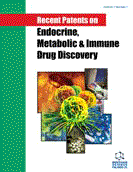Abstract
Background: Glucose-stimulated insulin secretion (GSIS) from the pancreatic β-cell involves several intracellular metabolic events which lead to the translocation of insulin granules towards the membrane for fusion and release. It is well established that loss of β-cell function and decreased GSIS underlie the pathogenesis of diabetes. Evidence from several laboratories, including our own, demonstrated requisite roles of Rac1 and phagocyte-like NADPH oxidase (Nox2)-derived reactive oxygen species (ROS) in optimal function of the pancreatic β-cell, including GSIS. However, it is becoming increasingly clear that prolonged exposure of β-cells to hyperglycemic conditions, leads to sustained activation of Rac1-Nox2 signaling axis culminating in excessive generation of intracellular ROS (oxidative stress) and β-cell dysregulation and demise. Such “cytotoxic” effects of ROS appear to be mediated via the stress-activated protein kinases/mitogen-activated protein kinases (SAPK/MAPK) signaling pathways.
Objective: This review discusses our current understanding of regulation and functions of the conventional MAPKs, namely, ERK1/2, JNK1/2 and p38MAPK. Conclusion: The MAPK pathways are activated in the presence of various stress stimuli including intracellular ROS, via distinct signaling cascades. Once activated, MAPKs participate in specific intracellular signaling processes via interaction with several downstream kinases including the MAPKactivated protein kinases (MAPKAPKs) and transcription factors including c-jun and p53. We have provided an overview of existing evidence in the islet β-cell on the regulatory roles of these MAPKs in mediating cellular responses to alterations in intracellularly generated ROS, which is mediated by the Rac1-Nox2 signaling module. Additionally, we enlisted recent patents developed to improve β-cell function in diabetes and novel pharmacological agents that target oxidative stress and MAPK pathways.Keywords: Glucotoxicity, MAPK signaling, NADPH oxidase-2, oxidative stress, pancreatic β-cell, Rac1.
 90
90





















